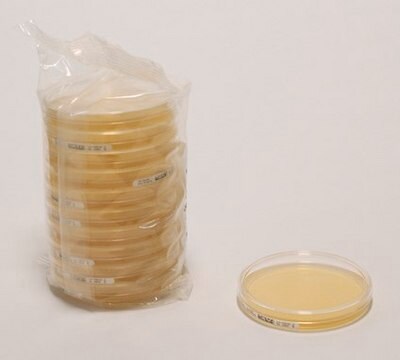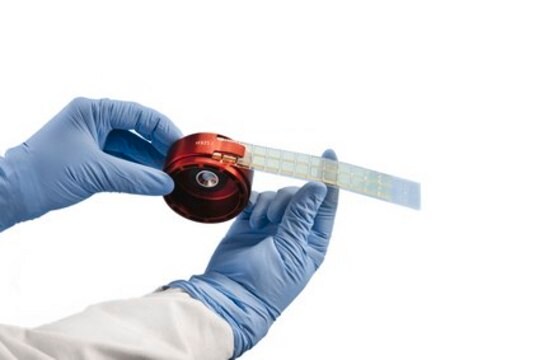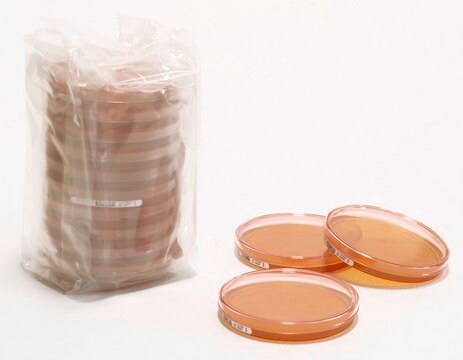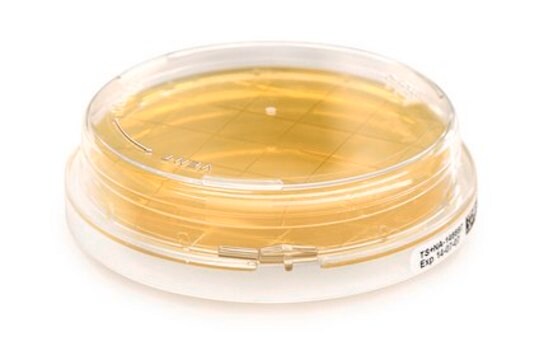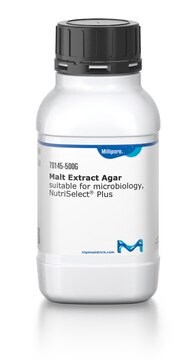1.46266
ReadyPlate™ CT DG 18 Agar ISO 21527-2
ReadyPlate™, ready-to-use, plate diam. 55 mm, for yeasts, for molds
Synonym(s):
DG 18 Agar, Dichloran 18% Glycerol Chloramphenicol Agar
Sign Into View Organizational & Contract Pricing
All Photos(1)
About This Item
UNSPSC Code:
41106231
NACRES:
NA.74
Recommended Products
Agency
ISO 21527-2
Quality Level
sterility
sterile
product line
ReadyPlate™
form
plate (ready-to-use)
feature
ready-to-use
composition
18% (w/w) glycerol and chloramphenicol
packaging
box of 20 plates
manufacturer/tradename
ReadyPlate™ CT
plate diam.
55 mm
pH
5.6±0.2
application(s)
food and beverages
surface monitoring
storage temp.
15-25°C
suitability
molds
yeasts
General description
ReadyPlate™ CT DG 18 Agar contact plates provide a ready-to-use method for environmental monitoring of surfaces in critical clean rooms and isolators. Dichloran Glycerol Medium is recommended for the isolation and enumeration of xerophilic molds from dried and semi-dried foods. The glycerol at 18% (w/w) lowers the water activity (aw) from 0.999 to 0.95 without causing any problem. Peptone provides carbon, nitrogen, vitamins, and minerals. Dextrose (Glucose) is a carbohydrate source. Phosphate buffers the medium. Magnesium sulfate provides divalent cations and sulfates. Dichloran is an antifungal agent added to the medium to reduce colony diameters of spreading fungi. Chloramphenicol is included to inhibit the growth of accompanying bacteria in the sample. Inhibiting the growth of bacteria and restriction of colony diameter of more-rapidly growing molds helps in the isolation of slow-growing fungi by preventing their overgrowth by more-rapidly growing species
Application
ReadyPlate™ CT Dichloran Glycerol Chloramphenicol Glucose Agar is used for the enumeration of yeast and molds from food and environmental samples with less water activity.
Legal Information
READYPLATE is a trademark of Merck KGaA, Darmstadt, Germany
Storage Class Code
11 - Combustible Solids
WGK
WGK 2
Certificates of Analysis (COA)
Search for Certificates of Analysis (COA) by entering the products Lot/Batch Number. Lot and Batch Numbers can be found on a product’s label following the words ‘Lot’ or ‘Batch’.
Already Own This Product?
Find documentation for the products that you have recently purchased in the Document Library.
Our team of scientists has experience in all areas of research including Life Science, Material Science, Chemical Synthesis, Chromatography, Analytical and many others.
Contact Technical Service
